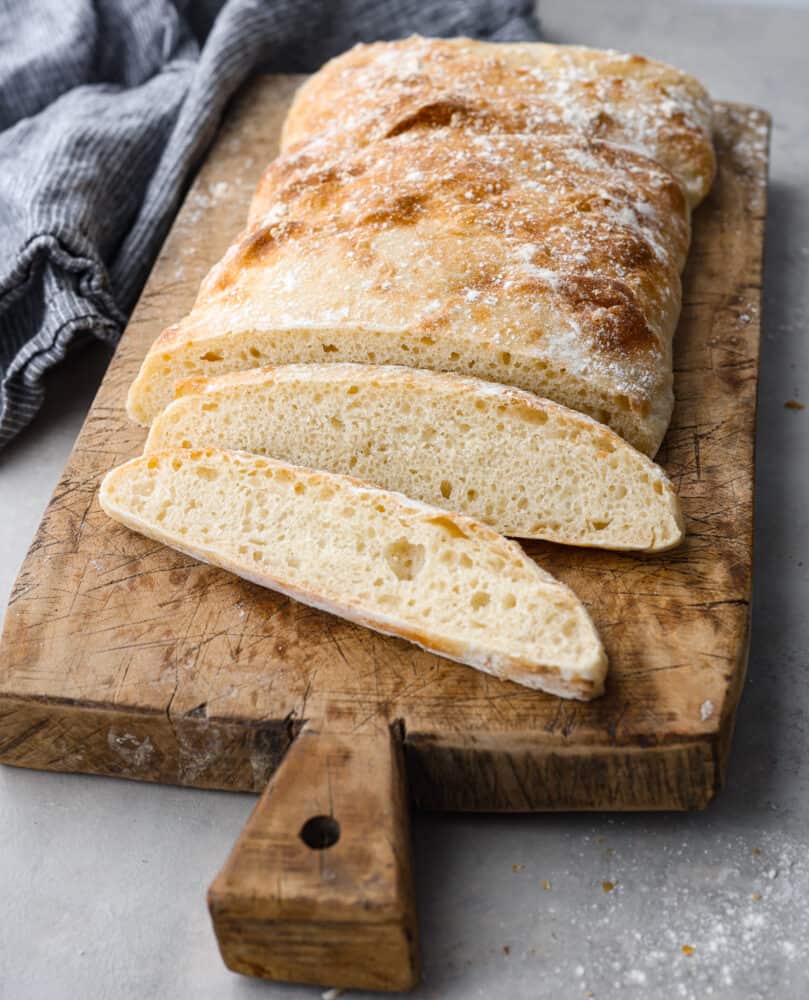
Make this classic Italian ciabatta bread recipe at home with just four simple ingredients! Crusty on the outside and perfectly chewy on the inside, this bread is delicious for sandwiches, served with soup, or simply toasted.
I love making homemade bread, and I have recently discovered how easy it is to make ciabatta bread! It’s so versatile because I can serve it with so many different recipes. Ciabatta is incredible with beef stew, and spaghetti, or enjoy it with this olive oil dip.
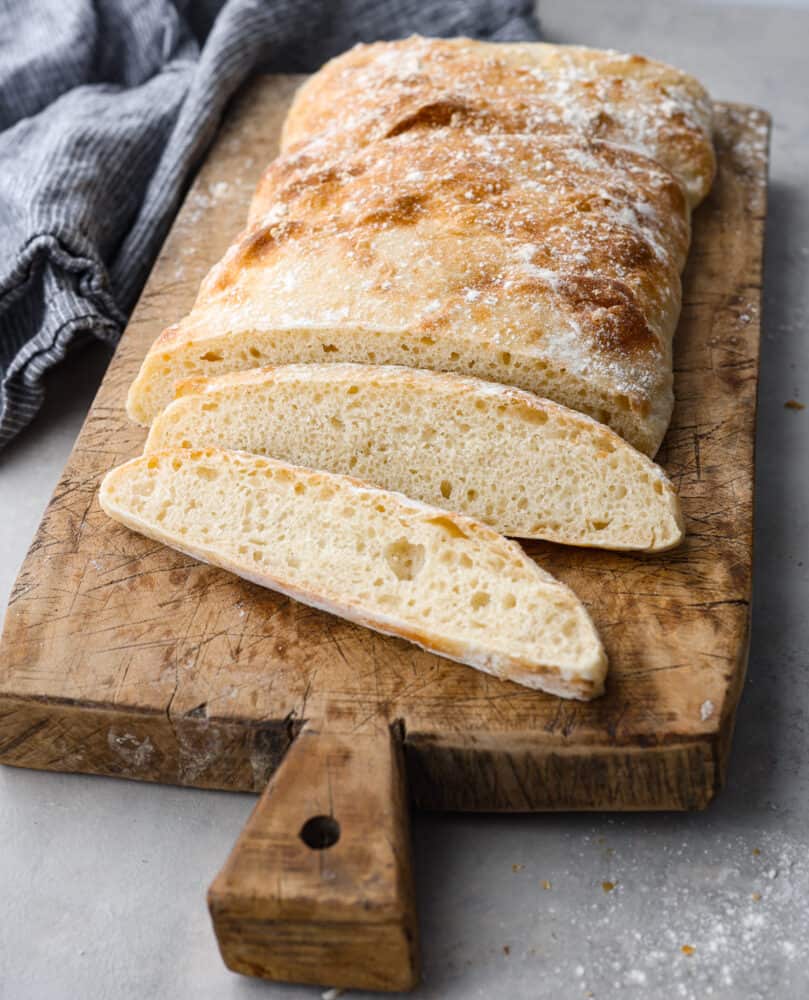
What Is Ciabatta Bread?
This white Italian bread has a crispy outer crust with an airy texture on the inside. The wet dough helps produce the irregular holes that form on the inside as it bakes. I love the unique characteristics of this beautiful bread, but I also love the delicious flavor!
Ciabatta has an incredibly chewy and sturdy texture. That is why it is perfect for dips and sauces because it absorbs so well. You have to slice up this ciabatta bread and serve it with this artichoke dip, creamy cheese sauce, or my crab dip!
Bread Ingredients Needed
One of the reasons I love making this ciabatta bread recipe is that it only takes four ingredients to make! It’s so convenient because it uses such simple baking ingredients. Most likely, you have all of the ingredients on hand too! Check out the recipe card below for exact measurements!
- Active Dry Yeast: All you need is about half of a packet!
- Warm Water: Make sure the water is about 90° Fahrenheit.
- Bread Flour: Bread flour is key! It’s what gives the bread a nice chewy texture.
- Salt: Salt is a must in bread!
Ciabatta Bread Recipe
You are going to love learning how to make homemade ciabatta bread. There is something so rewarding when that warm loaf comes out of the oven! It’s pretty easy to make, you just have to allow it plenty of time to rise, and you’re all set.
Prepare the Dough
- Combine Yeast, Water, Flour, and Salt: In the bowl of a stand mixer fitted with a dough hook, add the yeast, water, 2 cups flour, and salt. Mix on low speed until everything is well incorporated. At this point, you may need to add more flour but only mix in ¼ cup at a time. It will be a very wet dough but still workable.
- Mix the Dough: Increase the speed to medium once everything is mixed well. Mix for an additional 3-4 minutes. This will help develop the gluten structure. As it proofs, and each time you give it a fold, the dough will strengthen and come together more.
- Place Dough in Bowl, Cover, and Proof: Remove the dough from the mixer and place it in a bowl coated with olive oil. Cover the dough and let it rise until doubled in size. This will take about 45 minutes to an hour. I always keep my hands oiled with olive oil while working with this ciabatta dough, as it is a sticky dough.
Rise and Fold the Dough
- Fold the Dough: Once the ciabatta dough has doubled in size, fold the dough by stretching it out and folding it in on itself. You should degas the dough during this step. Oil the bowl again if needed.
- Cover, Proof, and Fold: Cover and let rest for another 30-40 minutes and perform a second fold on the dough.
- Cover, Rest, and Prepare Baking Sheet: Cover and allow the ciabatta dough to rise again but not quite double in size, rest about 20-30 minutes. While the dough is resting, prepare a sheet pan by lining it with parchment paper and spreading a liberal amount of flour on it.
- Gently Place Dough on Prepared Sheet Pan: GENTLY remove dough from the bowl and place it on the lined sheet pan, lightly spread it into an even rectangle, working from under the loaf. You don’t want to put any downward pressure on the loaf and force the air out.
Rise and Bake the Bread
- Cover and Rise: Cover and allow the ciabatta loaf to rise again for another 30-45 minutes. Preheat oven to 420° Fahrenheit
- Dust with Flour and Bake: The loaf is ready to bake when it is raised and airy. Dust the top of the ciabatta loaf with flour, then bake for 15-25 minutes. The bread should be an even light golden color with some brown spotting.
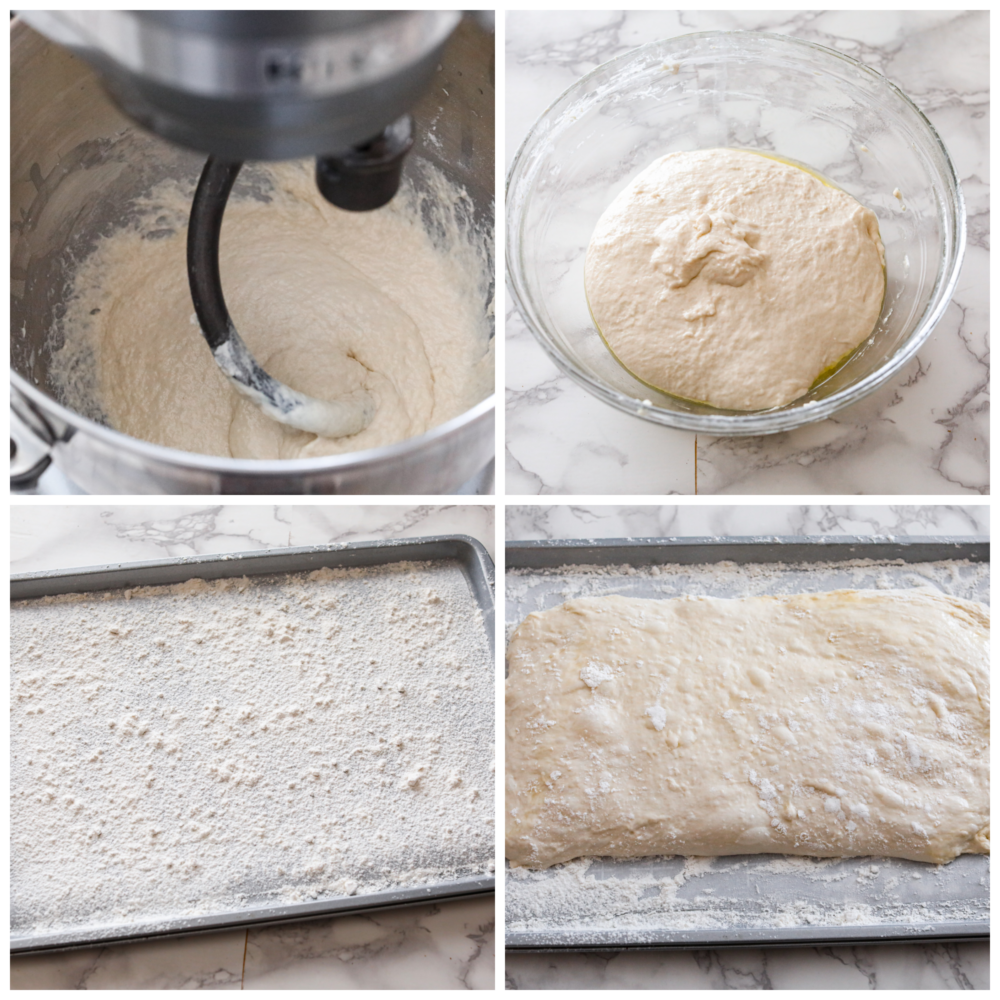
Tips and Ideas
Here are some important tips when making ciabatta bread. I also have some ideas on how to use your leftover bread! There are so many yummy ideas when is comes to ciabatta because it’s so versatile.
- Bread Flour is a Must: Bread flour is what gives the bread its chewy texture. You can use all-purpose flour if you need it, but the texture won’t be as chewy.
- Handle Dough With Care: This loaf should have a loose, open crumb. It’s important you don’t overhandle this dough when it’s in its final form.
- Cool Before Cutting: Allow the ciabatta loaf to cool before cutting.
- Make Ciabatta Rolls: This dough is great for making ciabatta rolls. Once the loaf has been made into a rectangle on the floured parchment, dip a pizza cutter into flour, then cut the loaf into 6 squares.
- Other Uses: Use up any leftover ciabatta by making it into garlic bread. It’s also great for sandwiches and croutons.
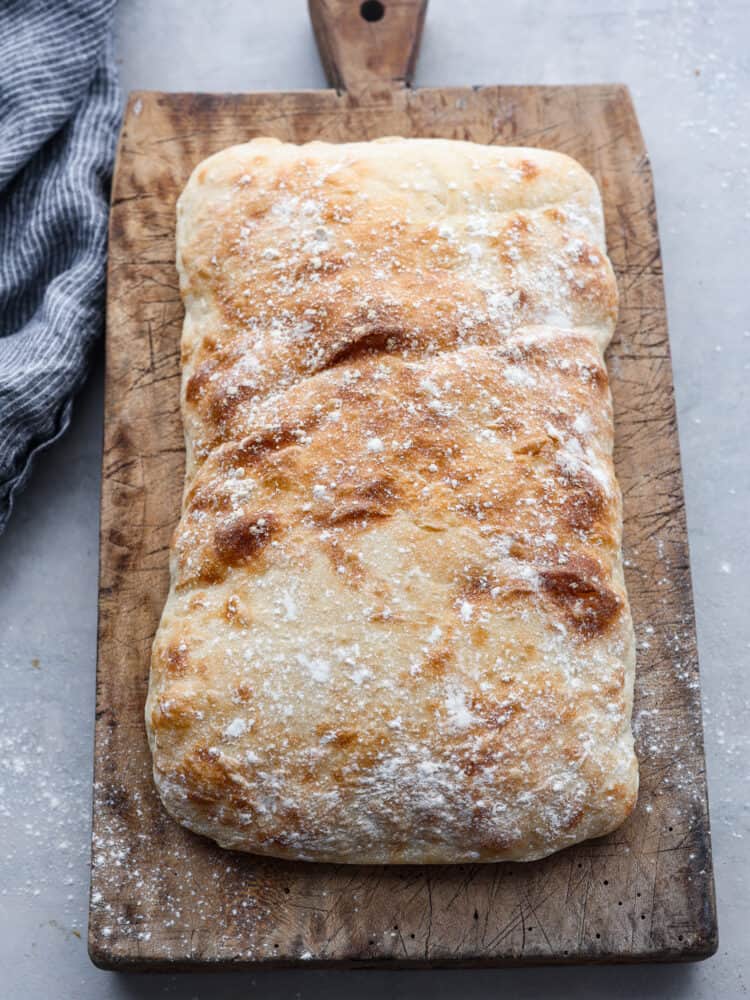
How to Store and Freeze Leftovers
Ciabatta bread is awesome to use throughout the week for sandwiches. I love having a fresh loaf to make my lunches. This bread also freezes perfectly! It thaws and tastes just as fresh as it does from the oven.
- On the Counter: Leftover ciabatta bread can be stored in an airtight container for up to 3 days. Store on the counter at room temperature.
- In the Freezer: Ciabatta freezes perfectly! Wrap leftover bread tightly in foil and seal in a sealable plastic bag. Freeze for up to 3 months. You can either slice it before you freeze it, or freeze it whole and slice when it’s thawed.
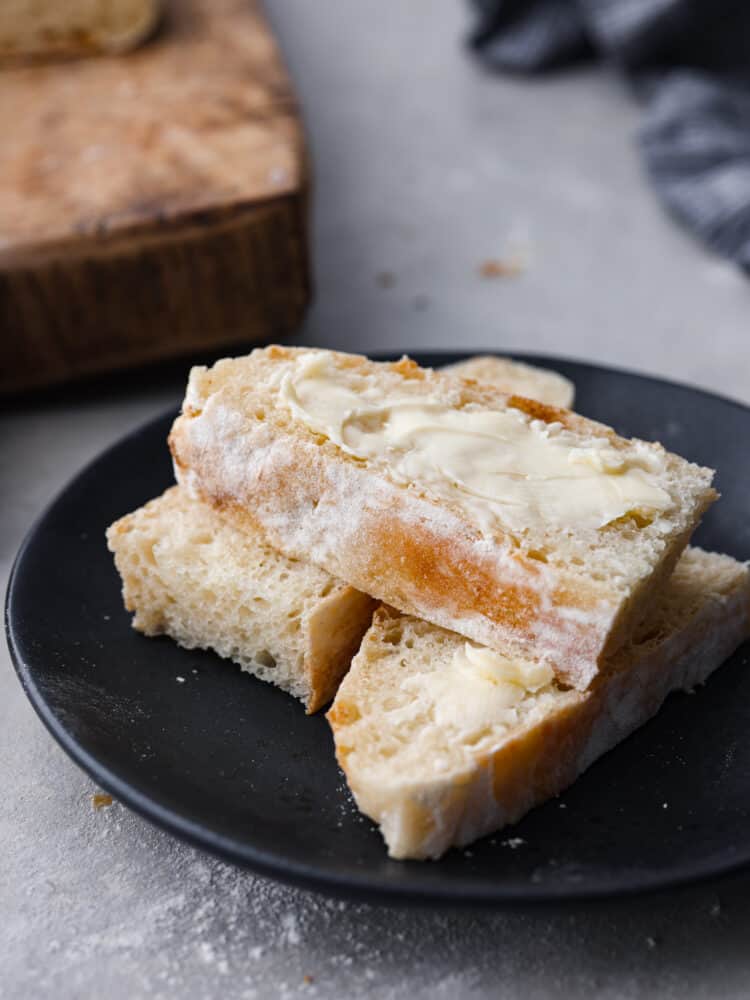

Ciabatta Bread
Ingredients
- 1 ½ tablespoons active dry yeast, about half a packet
- 1 ½ cups warm water, about 90° Fahrenheit
- 2-3 cups bread flour
- 1 ½ teaspoons salt
Instructions
Prepare the Dough
-
In the bowl of a stand mixer fitted with a dough hook add yeast, water, 2 cups flour, salt and mix on low speed until everything is well incorporated. At this point you may need to add more flour, only mix in ¼ cup at a time. This should be a fairly wet dough, but workable.
-
Once everything is well mixed, increase speed to medium and mix for an additional 3-4 minutes. This will help develop the gluten structure. Again, this dough is fairly wet, but as it proofs and each time you give it a fold, the dough will strengthen and come together more.
-
Remove dough from mixer and place in a bowl coated in olive oil, cover and let it sit until it’s doubled in size, about 45 minutes to an hour. I always keep my hands oiled with olive oil while working with this dough, as it is a sticky dough.
Rise and Fold the Dough
-
Once the dough has doubled in size, fold the dough by stretching it out and folding it in on itself. You should degas the dough during this step. Oil the bowl again if needed.
-
Cover and let rest for another 30-40 minutes and preform a second fold on the dough.
-
Cover and allow the dough to rise again but not quite double in size, rest about 20-30 minutes. While the dough is resting, prepare a sheet pan by lining it with parchment paper and spreading a liberal amount of flour on it.
-
GENTLY remove dough from the bowl and place it on the lined sheet pan, lightly spread it into an even rectangle, working from under the loaf. You don’t want to put any downward pressure on the loaf and force the air out.
Rise and Bake the Bread
-
Cover and allow the ciabatta to rise again for another 30-45 minutes. Preheat oven to 420° Fahrenheit
-
Once the loaf is ready it should be raised and airy, dust the top of the loaf with flour and bake for 15-25 minutes. The bread should be an even light golden color with some brown spotting.

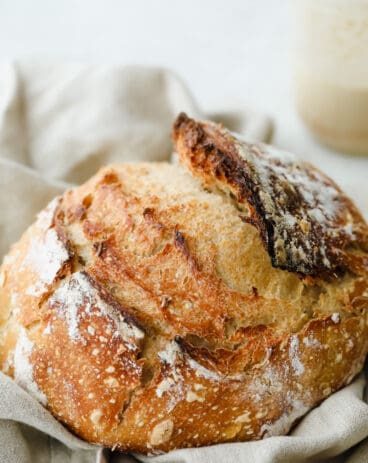
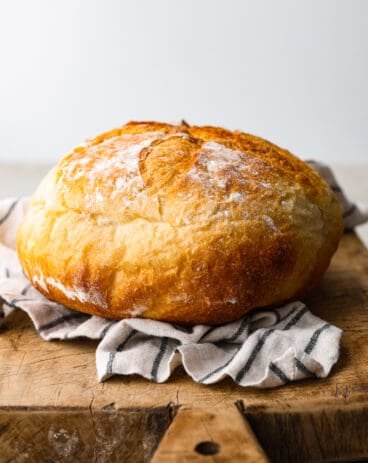
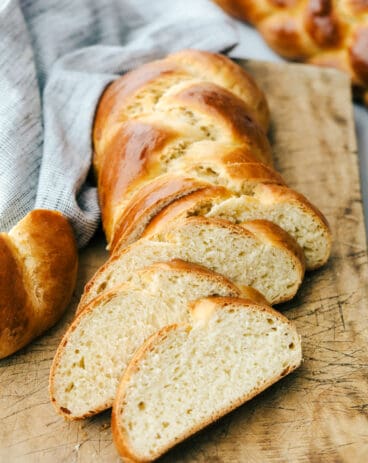
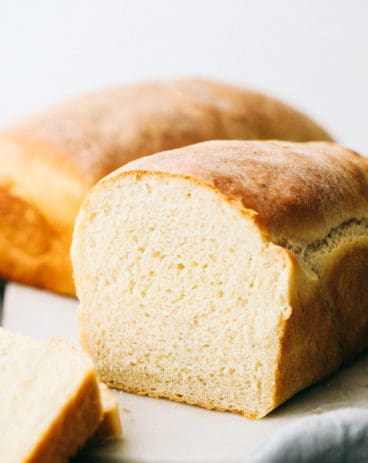



0 Mga Komento